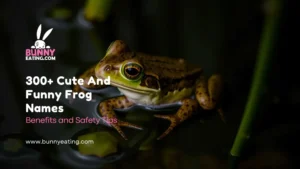Dogs with blue tongues are unique and fascinating. These dogs have a genetic trait that causes their tongues to appear blue instead of the usual pink. This trait is rare and found in only a few dog breeds.
Ever wondered why some dogs have blue tongues? It’s a curious feature that makes these dogs stand out. If you’ve seen one, you might be surprised and intrigued by this unusual characteristic. Dogs That Have Blue Tongues?
The Chow Chow and Shar-Pei are the most famous dogs with blue tongues. This trait is rare, making these breeds extra special. Blue tongues are not harmful and are simply a unique part of these dogs’ genetics.
What Causes Dogs to Develop Blue Tongues?
The development of blue tongues in dogs is primarily a result of genetics. Just like how some humans inherit blue eyes or red hair, certain dog breeds inherit genes that lead to increased melanin production in their tongues. This trait is most commonly associated with Spitz breeds, which originate from cold climates and often have thick, fluffy coats.
Environmental factors don’t typically cause a dog’s tongue to turn blue permanently. However, temporary blueness can occur due to cyanosis, a condition where the tongue doesn’t get enough oxygen. This is a medical emergency and very different from the natural blue tongues we’re discussing. If your dog’s tongue suddenly turns blue, it’s crucial to seek veterinary care immediately, as it could indicate heart defects, lung disease, or other serious breathing issues.
Dog Breeds With Blue Tongues

Breed 1: Chow Chow
The Chow Chow is perhaps the most famous blue-tongued dog breed. Originating from northern China, these fluffy giants are known for their lion-like appearance and loyal nature. Their tongues aren’t just blue – they’re a deep blue-black color that’s striking against their reddish-gold or black coats. Chow Chows have been recognized by the American Kennel Club since 1903 and are part of the Non-Sporting group.
Chow Chows are more than just their unique tongues, though. They’re known for their independent personalities and can be aloof with strangers, making them excellent watchdogs. However, they form strong bonds with their families and can be incredibly devoted. Training and socialization are crucial for Chow Chows, as their stubborn streak can make them challenging for first-time dog owners.
Breed 2: Chinese Shar-Pei
The Chinese Shar-Pei is another breed famous for its blue tongue, along with its distinctive wrinkly skin. These medium-sized dogs originate from southern China and were originally bred for hunting and guarding. Their name “Shar-Pei” actually means “sand skin” in Chinese, referring to their rough, sandpaper-like coat texture.
Shar-Peis are known for their intelligence and loyalty, but they can also be stubborn and independent. They typically have a calm demeanor and are less energetic than some other breeds, making them suitable for apartment living. However, their wrinkles require special care to prevent skin infections, and they’re prone to certain health issues like hip dysplasia. Despite these challenges, Shar-Peis make wonderful companions for those willing to put in the effort to care for their unique needs.
Breed 3: Thai Ridgeback
The Thai Ridgeback is a less common breed in the USA but is notable for its occasional blue-spotted tongue. This ancient breed hails from Thailand, where it was used for hunting and as a watchdog. Their most distinctive feature is the ridge of hair along their back that grows in the opposite direction to the rest of their coat.
Thai Ridgebacks are athletic, intelligent, and independent dogs. They have a strong prey drive and can be challenging to train, making them better suited for experienced dog owners. Their short, smooth coats are low-maintenance, but they require plenty of exercise and mental stimulation to stay happy and healthy. While not all Thai Ridgebacks have blue tongues, some may have blue or black spots on their tongues.
Breed 4: Eurasier
The Eurasier is a more recent breed, developed in Germany in the 1960s by crossing Chow Chows, Wolfspitzes, and Samoyeds. As a result of their Chow Chow ancestry, some Eurasiers inherit the blue tongue trait. These medium-sized dogs are known for their fluffy coats and fox-like appearance.
Eurasiers are calm, confident, and make excellent family pets. They’re typically good with children and other pets when properly socialized. Unlike some other blue-tongued breeds, Eurasiers are generally easier to train and more eager to please their owners. They do require regular grooming to maintain their thick coats, especially during shedding seasons.
Breed 5: Akita
The Akita is a large, powerful breed that originated in Japan. While not all Akitas have blue tongues, some may have blue-black spots on their tongues. There are two distinct types of Akitas: the Japanese Akita (or Akita Inu) and the American Akita, which is more common in the USA.
Akitas are known for their loyalty and protective nature. They were originally bred for hunting large game and as guard dogs. Akitas are typically reserved with strangers but form strong bonds with their families. They require firm, consistent training and early socialization to manage their strong-willed personalities. Despite their imposing size, Akitas can be gentle and playful with their loved ones.
Breed 6: Siberian Husky

The Siberian Husky is an energetic, friendly breed known for its striking blue eyes and wolf-like appearance. While not all Huskies have blue tongues, some may have blue or black spots on their tongues. These spots are perfectly normal and don’t affect the dog’s health in any way.
Huskies were bred as sled dogs in northeastern Asia and are known for their endurance and ability to work in harsh, cold conditions. They have a high energy level and require plenty of exercise and mental stimulation. Huskies are generally good with children and other dogs, but their strong prey drive means they may not be suitable for homes with small pets. Their thick double coats shed heavily twice a year, requiring regular grooming.
Breed 7: Pomeranian
The Pomeranian is a small, fluffy breed that belongs to the Spitz family. While most Pomeranians have pink tongues, some may have blue or black spots on their tongues, likely due to their shared ancestry with larger Spitz breeds like the Chow Chow.
Despite their small size, Pomeranians have big personalities. They’re lively, intelligent, and can be quite vocal. Pomeranians are generally good with children but may be better suited to homes with older kids who can handle them gently. Their long, fluffy coats require regular grooming to prevent matting and tangling. Pomeranians are adaptable and can do well in various living situations, from apartments to large homes.
Breed 8: Dalmatian
The Dalmatian is famous for its distinctive spotted coat, but did you know that some Dalmatians have spotted tongues too? While not as common as in breeds like the Chow Chow, some Dalmatians may have blue or black spots on their tongues.
Dalmatians were originally bred as carriage dogs and later became popular as firehouse mascots. They’re energetic, playful dogs that require plenty of exercise. Dalmatians are intelligent and can be trained for various activities, from agility to obedience. They’re generally good with children but may be too energetic for very young kids. Potential owners should be aware that Dalmatians are prone to certain health issues, including deafness and urinary stones.
Breed 9: Australian Cattle Dog
The Australian Cattle Dog, also known as the Blue Heeler, is a hardworking breed developed in Australia for herding cattle. While not all Australian Cattle Dogs have blue tongues, some may have blue or black spots on their tongues.
These dogs are known for their intelligence, loyalty, and high energy levels. They excel in various dog sports and activities that challenge them mentally and physically. Australian Cattle Dogs have a strong herding instinct and may try to herd children or other pets. They require plenty of exercise and mental stimulation to prevent boredom and destructive behaviors. With proper training and socialization, they make excellent companions for active families.
Breed 10: Border Collie
The Border Collie is often considered the world’s smartest dog breed. While not typically associated with blue tongues, some Border Collies may have blue or black spots on their tongues. This trait doesn’t affect their abilities or health in any way.
Border Collies were originally bred for herding sheep and are known for their intense focus and work ethic. They’re highly intelligent and excel in various dog sports, including agility, obedience, and flyball. Border Collies require a lot of mental and physical stimulation to stay happy and healthy. They’re generally good with children and other pets when properly socialized. However, their herding instincts may cause them to try to herd family members, so training is essential.
Other Dog Breeds With Blue Tongues or Blue Spots

While the breeds mentioned above are most commonly associated with blue tongues or spots, this trait can occasionally appear in other breeds as well. Some German Shepherds, Labrador Retrievers, Golden Retrievers, Newfoundlands, and Mastiffs may have blue or black spots on their tongues. It’s important to note that these spots are generally harmless and don’t indicate any health issues.
Mixed breed dogs may also inherit blue tongues or spots if they have any of the blue-tongued breeds in their ancestry. For example, a Chow Chow mix might have a partially blue tongue or blue spots. The presence of a blue tongue or spots doesn’t necessarily indicate pure breeding and shouldn’t be used as the sole identifier of a dog’s breed.
Can Blue Tongues in Dogs Be a Medical Concern?
In most cases, a naturally blue tongue is not a medical concern. It’s simply a genetic trait that doesn’t affect the dog’s health or behavior. However, it’s crucial to differentiate between a naturally blue tongue and one that has suddenly changed color. A tongue that suddenly turns blue could be a sign of cyanosis, which indicates a lack of oxygen in the blood. This is a serious medical emergency that requires immediate veterinary attention.
Other concerning tongue color changes include white patches, which could indicate anemia or other health issues, and red spots, which might be a sign of infection or injury. If you notice any sudden changes in your dog’s tongue color, it’s best to consult with a veterinarian to rule out any potential health problems.
Blue Tongue Maintenance and Health Concerns
Caring for a dog with a blue tongue isn’t much different from caring for any other dog. However, there are a few things to keep in mind:
- Regular dental care: Just like dogs with pink tongues, blue-tongued dogs need regular dental care to prevent oral cancers, gum disease, and bad breath. Brush your dog’s teeth regularly and provide dental chews or toys.
- Hydration: Ensure your dog always has access to fresh, clean water. A well-hydrated tongue is a healthy tongue, regardless of its color.
- Regular check-ups: During your dog’s annual vet visit, make sure the vet examines the tongue along with the rest of the mouth. While blue tongues themselves aren’t a health concern, other oral health issues can still occur.
- Sun protection: Some blue-tongued breeds, like the Chow Chow and Shar-Pei, have black mouths that can be prone to sunburn. If your dog spends a lot of time outdoors, consider using pet-safe sunscreen on exposed areas.
- Watch for changes: While the blue color itself isn’t a concern, any changes in texture, swelling, or the appearance of growths should be checked by a vet.
Remember, a blue tongue is just one of the many unique features that make our canine companions so special. Whether your dog’s tongue is pink, blue, or spotted, the most important thing is to provide them with love, care, and regular veterinary check-ups to ensure they lead happy, healthy lives.
Conclusion
In conclusion, dogs that have blue tongues are special and unique. Not many dogs have this feature. The blue tongue is found in only a few breeds like the Chow Chow and Shar-Pei. This feature is caused by genetics, and it is a natural part of these dogs. It does not affect their health or behavior.
Understanding dogs that have blue tongues helps us appreciate the diversity in dog breeds. These dogs are just as friendly and loyal as any other dog. If you see a dog with a blue tongue, know that it’s something rare and interesting. Their blue tongues are simply one of the many fascinating traits that make dogs so wonderful.
FAQs
What breed of dog has a blue tongue?
Chow Chows and Shar-Peis are the most well-known breeds with blue tongues. These breeds naturally have this unique trait.
What does a blue tongue on a dog mean?
A blue tongue on a dog is usually a natural genetic trait, especially in certain breeds. It doesn’t indicate any health issues.
What dogs have purple tongues?
Chow Chows, Shar-Peis, and sometimes mixed breeds can have purple or darkly pigmented tongues due to their genetics.
Can a blue tongue bite hurt a dog?
A blue tongue is not harmful and doesn’t affect the dog’s ability to bite or its overall health. It’s just a unique feature.

Aledon is the author at Bunny Eating, specializing in pets. With a deep understanding of pet breeds, behavior, food, and health, Aledon provides expert advice and valuable insights to help you care for your furry friends.











